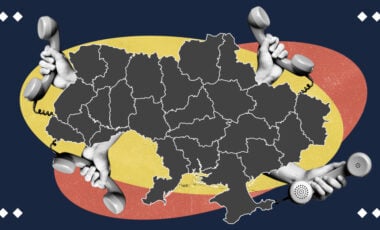Ukrainian drone assaults may push Russia to redeploy aircraft and air defense from battle zones – WSJ

Photo: illustrative
As the allies have yet to authorize their long-range weapons to target deep into Russia, Ukraine has ramped up its use of UAV attacks on Russian military bases. This could potentially compel the Russian Federation to relocate its aircraft and anti-aircraft defenses from the front.
The Wall Street Journal reports this.
According to Justin Bronk, a senior fellow at the Royal Joint Forces Institute in London who studies air power and technology, while the drone strikes hurt Russia, the damage is not yet strategically significant.
"However, the current level of damage to air bases is something the Russians cannot simply accept in the long term, as it will become a serious problem for the (air force) over time," he said.
It is reported that by attacking airbases deep in the Russian Federation, Ukraine could force Moscow to redeploy air defense systems away from frontline areas, making facilities near the frontline more vulnerable to Ukrainian strikes.
Bronk believes that drone strikes could also prompt Russia to redeploy some of its fighter and attack aircraft to bases far away from Ukraine.
According to him, this has already reduced the number of glider bomb releases since Russian planes are forced to fly further to the bases and from the bases to the front.
According to the article, Ukraine has previously downed Russian planes carrying glider bombs. However, this required putting their limited air defense systems at risk by moving them closer to the front line.
According to Douglas Barry, a senior researcher on military aviation and space at the International Institute for Strategic Studies in London, the rising number and variety of Ukrainian drone attacks are posing a significant issue for Russia.
According to him, although Ukrainian drones cannot replace the long-range missiles that Kyiv wants permission to use, they force Russia to think about where it places its aircraft and air defense equipment.
"The effectiveness of the drone is not only in the fact that it hits the target – it has an effect even if it is shot down," Barry is convinced.

Solutions to win: Kyiv School of Economics launches cutting-edge master's program in drone development
For reference:
On the night of August 22, the Security Service of Ukraine, in collaboration with the Special Operations Forces of Ukraine's armed forces, targeted warehouses containing anti-tank weapons and fuel located at the Marinovka airfield in the Volgograd region of Russia.
On the night of August 18, Ukraine's intelligence and armed forces carried out a drone attack on the Kavkaz plant in the Rostov region of the Russian Federation, where petroleum products for the needs of the Russian army were stored.
Ukrainian intelligence conducted a special operation on August 16 in the Nizhny Novgorod region of Russia. Kamikaze drones were used to attack the Savasleyka military airfield. According to a source in military intelligence, the attack destroyed one MIG-31 aircraft and two Il-76 aircraft and damaged approximately five more aircraft, possibly MIG–31K or MIG–31I models.
On the night of August 14, Russia was also massively attacked by drones. Even though the Ministry of Defense of the Russian Federation reported on the so-called "destruction" of 117 drones in eight regions of the aggressor country, the so-called Russian military commanders wrote about three Russian airfields that were under attack.
Then, it was revealed that the Voronezh, Kursk, Savasleyka, and Borysoglebsk airfields were attacked.






















































